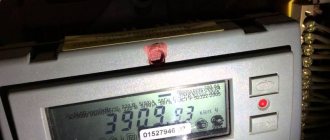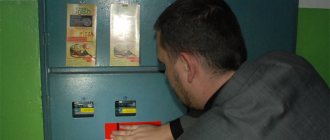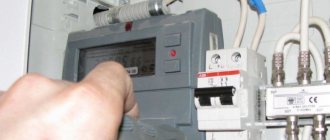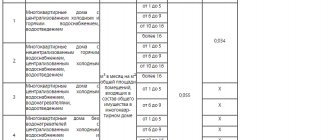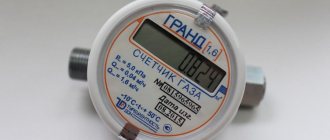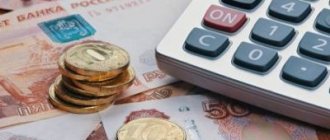Which electricity meter is better: single-tariff or dual-tariff? Today, many consumers ask this question. Is multi-tariff accounting really beneficial? How expensive are two-tariff meters and do they need additional maintenance? What difficulties may arise when installing them? Let's look at these issues one by one.
Standard electricity meter
Types of electricity meters
First, let's look (without going too deep into the topic) what types of meters there are, and what is their difference. So, first of all, electricity metering devices are divided according to the principle of operation:
- Induction (electromechanical) are those “good old” meters with a rotating disk and a drum dial that were in every Soviet house. Despite the fact that they are considered outdated, they can be found in a private house or apartment to this day. The design of these devices allows them to be used only for single-tariff electricity metering.
- Electronic – compact modern devices with wider functionality and precise characteristics. This electric meter allows you to carry out multi-tariff accounting and take readings automatically.
Electronic devices for metering electricity are divided into two types:
- Two-tariff – to account for consumption within two time periods. For example, the period from 7 am to 11 pm is considered at a more expensive “day” rate, and the period from 11 pm to 7 am is considered at a favorable “night” rate. The meter automatically records the consumption of these two tariffs in different columns.
- Multi-tariff - such an electric meter works on the same principle as the previous one, but there can be at least three time periods for charging. Russian suppliers allow metering at no more than three tariffs: the most expensive is electricity consumed during the “peak” period - from 7 to 10 am and from 5 to 9 pm; the “half-peak” period is calculated cheaper: from 10 am to 5 pm and from 9 to 11 pm; and the rest of the time (from 11 at night to 7 in the morning) - at the most favorable “night” rate.
How does a two-tariff electricity meter work?
The operating format of a two-tariff meter is based on the fact that at different times of the day specific tariffs for paying for electricity are determined. At night, kilowatts are cheaper than during the day.
It is beneficial for power plants to operate evenly. However, in practice, more energy is used during the day than at night. The indicators are reduced to almost zero. But before the creation of two-tariff meters, it was necessary to increase fuel consumption for the production of electrical energy.
Energy meters of this type work according to the following principle:
- First tariff 7.00 - 23.00: daytime. The cost during these hours is noticeably higher.
- Second tariff 23.00 - 7.00: night preferential time. The price when paying for energy during these hours is noticeably cheaper.
Principle and benefits of tariffing
Why do electricity suppliers offer such “discounts” at night? The fact is that the peak load on the network, observed in the morning and evening (everyone is cooking, doing laundry, watching TV, using computers, etc.), requires additional costs on the part of the company - it is necessary to use more expensive equipment to ensure stable operation of the network. These costs, in turn, affect the final cost of electricity.
Thus, “shifting” part of the load to the night, when consumption is minimal, allows the company to reduce production costs and the cost of its services.
Each region and locality has its own tariffs and boundaries of accounting periods, but the overall picture is approximately the same:
- electricity consumed at night tariff is 3-4 times cheaper than at general day tariff;
- the cost of electricity consumed during “half-peak” time is approximately 25% lower than the standard tariff.
Electricity meters in houses are located in specially designated areas
Savings are ensured by redistributing the work of the most powerful household appliances:
- Modern washing machines and dishwashers have convenient automatics with a delayed start - if the desired washing cycle takes 2 hours, you can set it to start at 4:00, and after waking up, hang the clothes to dry. You can also unload the dishwasher in the morning.
- Many people already use water heaters, heaters and air conditioners mainly in the evening and at night, so here two-tariff accounting is only “at hand”.
This distribution principle is more or less optimal for people with a normal rhythm of life, which includes getting up early for work and combining household chores with leisure in the evening. Night owls who actively use electrical appliances after midnight benefit even more from this.
How to choose?
What do you need to consider to choose a good electricity meter? First of all, you should get rid of the prejudice that the more expensive the electric meter, the better it is. A simple low-cost device can provide a sufficient level of functionality and reliability. In addition, expensive equipment often requires additional maintenance.
The most important parameter influencing the choice is the accuracy class. The higher it is, the less you will have to overpay for errors in calculations. An indicator of 2.0 is considered optimal.
Look at what test interval the meter is designed for. Some modern models are ready to reliably serve for 15-20 years, but most often this figure is 4-5 years.
Before choosing a particular meter, check it for compliance with the type of network connected to your apartment or house. Only a single-phase device can be connected to a single-phase network, and a three-phase device to a three-phase network.
For home or apartment
To understand which counter is best for you, you need to know what makes each one better than the other.
The main advantage of single-tariff devices is reliability and low cost. In electrical engineering, the rule is “the simpler, the stronger,” so these devices have a long service life and require virtually no maintenance. In addition, single-tariff meters work with inexpensive automation, which also allows you to save money. This is a good option for an apartment that does not use powerful consumer appliances (water heater, stove, etc.).
It is better to choose two-tariff meters for those who live in a private house. Electric heating, night machine washing (without disturbing the neighbor's light sleep) and the need to heat water in a boiler can make up a decent proportion of total consumption. Here the benefits of multi-tariff electricity metering are obvious.
What is a two-tariff electricity meter
The essence of the metering device is contained in its name - two-tariff electricity meter . That is, it is clear that the readings are calculated according to two tariffs. How does this all happen and who benefits most of all?
Why are energy companies willing to reduce the cost of one kilowatt by more than half? Is it really just for the sake of optimization?
Nuclear power plants are the basis of the energy system of the countries of the post-Soviet space. They predict the energy balance on a daily basis, then increase or decrease the power of nuclear units.
The catch is that the specifics of the technical processes of using nuclear fuel do not allow these processes to be activated instantly. Therefore, it turns out that in the evening the nuclear power plant operates at maximum capacity, and at night the generation of resources is almost in vain.
The leadership of the Russian Ministry of Energy decided to introduce multi-tariff meters into circulation. The most popular models of them are two-tariff ones.
This approach allowed citizens to significantly save on personal funds. And nuclear power plants, in turn, reduced the load on equipment in the evening by more than 20%.
The daily routine has changed. When using such a meter, the subscriber, of course, saves, but he has to pay for the convenience of his time. To heat water in the boiler or iron clothes, you will have to wait until 23.00.
The savings when using a two-tariff electricity meter are obvious . Consumers pay less, and substations save their resources and extend the service life of equipment.
What are the savings?
The transition to two-tariff consumption metering would be clearly beneficial if the daytime zone tariff was equal to the standard one, called single-rate. However, this is not so - it is not profitable for suppliers to provide electricity in this way and they make the “daytime” tariff more expensive than usual. Are the savings real in this case, and what calculations need to be made to determine them?
In order to find out whether it would be profitable to install a two-tariff meter in an apartment, you need to take the energy consumption profile. It will reflect how much electricity is consumed in a certain period of time. To do this, you need to record meter readings at 7:00 and 23:00 for a month, distributing them into separate columns, for example, “day” and “night”.
In our example:
- the daytime zone established in the region lasts from 7 am to 11 pm, its tariff is 3 rubles 50 kopecks per kWh of energy;
- the night zone is calculated at 2 rubles per kW-hour;
- The standard one-rate tariff is 3 rubles 20 kopecks.
Thus, if the apartment has a two-tariff electric meter, during the daytime you will have to overpay 30 kopecks for each kWh of energy. But the saving during the night period is 1.50 rubles. It turns out that for equal profitability, for every kilowatt spent at night, there should be 5 kilowatts “boosted” during the day. The ratio that allows us to find out how much electricity needs to be spent at night in order for two-tariff metering to become profitable for us is called the night consumption threshold.
In our case it is 1/(1+5) ≈ 0.17. This means that two-rate tariffication is justified if the night period accounts for more than 17% of total consumption. That is, differentiation is beneficial to us if out of 1000 kW consumed during the month, more than 170 kW was consumed at night.
Let's give a real example. The current single-rate tariff in Moscow is 5.03 RUR/kWh, the peak tariff (when differentiated by two zones of the day) is 5.57 RUR/kWh, and the night tariff is 1.43 RUR/kWh.
We carry out calculations: 1/(1+(5.03 – 1.43)/(5.57-5.03)) = 0.13,
and we learn that the threshold for night consumption in Moscow is 13%. It is very beneficial, since this share can be more than covered by starting the washing machine after 23 hours.
For comparison, let’s calculate this indicator in the Samara region, where the single-rate tariff is 3.17 RUR/kWh, the peak “daytime” tariff (when differentiated by two zones of the day) is 3.19 RUR/kWh, and the night tariff is 1.57 r/kWh
The nighttime consumption threshold is 1/(1+(3.17-1.57)/(3.19-3.17)) = 0.01 or 1%.
As we see, in this case, two-tariff metering is always to the advantage of the consumer, since even an ordinary refrigerator operating around the clock “rewinds” more than 1% of total consumption.
To calculate the threshold for night consumption when differentiating between three zones of the day, the formula would have to be significantly more complicated, but Russian suppliers make this task much easier. In almost all regions, the half-peak zone tariff (from 7:00 to 10:00 and from 21:00 to 23:00) is equal to the standard single rate.
Thanks to this, the “half-peak” can simply be removed from the calculations, and the calculations can be carried out in the same way as for a two-tariff meter. For example, in the Samara region, the peak zone tariff is 3.53 RUR/kWh, the half-peak tariff is 3.44 RUR/kWh, and the night tariff is 1.73 RUR/kWh. Accordingly, the night consumption threshold is:
1/(1+(3.44-1.73)/(3.53-3.44)) = 0.05 or 5%.
Soviet-style electricity meter
How to take readings from a two-tariff electricity meter
A two-tariff meter allows you to keep separate energy records at different times of the day. To do this, you need to correctly record the readings of the device and know exactly from what time the tariff begins.
The algorithm for recording and taking readings involves the following actions:
- time periods are selected on the display - T1 day, T2 night;
- every month, by pressing the “Enter” button, it is necessary to record the readings of T1 and T2;
- indicators T1 and T2 for the previous period are subtracted from the indicators for the current month;
- the resulting numbers are multiplied by the price of the day and night tariff.
In total, the cost of day and night expenses will be equal to the amount of payment for the calendar month. This information will tell you how to pay at different rates using the T2 device.
Conclusion
Based on our calculations, we can conclude that today in most regions of Russia a multi-tariff electricity meter is more preferable. Despite this, it is advisable to carry out an individual calculation of savings taking into account the following factors:
- An electronic meter is much more expensive than a regular single-tariff meter and will pay for itself within several years.
- Each change in the division of accounting zones and the change of clocks to summer/winter time requires reprogramming the device. On average, this service costs 400-500 rubles.
- Electricity tariffs in your locality may differ greatly from those presented in the examples. Energy supply organizations in regions with a high share of night consumption are trying to neutralize the benefits of differentiated metering.
- The more “smart” equipment you have in your home (which can be set to delayed start and safely left overnight), the greater the savings a two- and three-tariff meter can bring.
Please note that houses equipped with stationary electric stoves and electric heating systems are serviced at separate rates. If your home falls into this category, before choosing an electric meter, check with your energy sales organization at what price your debt will be calculated.


